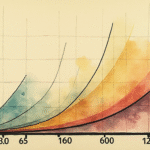Background on General Motors and the Current Trade Situation
General Motors (GM), a major American automotive manufacturer, has announced that it will reduce the number of shifts at its truck assembly plant in Oshawa, Ontario, Canada. This decision comes as the ongoing trade disputes initiated by U.S. President Donald Trump continue to negatively impact the North American automotive sector.
Trade Disputes and Their Impact
In March, President Trump imposed a 25% tariff on car imports from the United States’ trade partners, including Mexico and Canada. This move severely affected automakers that had established highly integrated production lines in the region. The tariffs targeted GM’s operations, as well as those of other automotive companies.
GM’s Response and Further Developments
In response to these tariffs, GM projected a financial impact of between $400 million and $500 million for the year. Despite President Trump’s attempts to mitigate the tariff’s effects earlier in the week, GM announced on Friday that it would reduce shifts at its Oshawa plant from three to two.
The company stated that this change would help maintain a sustainable manufacturing footprint as GM repositions the Oshawa plant to produce more trucks for Canadian customers.
Consequences for Employment
The shift reduction is expected to result in the elimination of 700 out of approximately 3,000 jobs at the Oshawa plant, according to the automotive workers’ union.
Doug Ford, Ontario’s Premier, expressed his concern regarding the news, stating that it would be “extremely tough” for Oshawa workers and their families. He pledged to continue fighting daily to attract new investments, secure well-paying jobs, and support workers and their families amidst the economic uncertainty caused by tariff chaos and trade threats from President Trump.
Tariff Adjustments and Exemptions
On Tuesday, President Trump issued an order to reduce overlapping tariffs on automobile manufacturers while simultaneously imposing a 25% tariff on steel and aluminum imports. The U.S. government also granted the industry a two-year grace period to relocate supply chains within the United States.
Additionally, partial tariff exemptions were provided to Mexico and Canada based on the value of components manufactured in the U.S. Meanwhile, U.S. imports of automotive parts now face a 25% tariff, with exemptions for components compliant with the USMCA (United States-Mexico-Canada Agreement).
Key Questions and Answers
- What is the main reason for GM’s decision to reduce shifts at its Oshawa plant?
The primary reason for GM’s decision is the ongoing trade disputes initiated by President Trump, which have negatively impacted the North American automotive sector.
- How many jobs are expected to be eliminated at the Oshawa plant?
Approximately 700 out of around 3,000 jobs are expected to be eliminated at the Oshawa plant.
- What measures has President Trump taken to address the concerns of the automotive industry?
President Trump has issued an order to reduce overlapping tariffs on automobile manufacturers and granted the industry a two-year grace period to relocate supply chains within the United States. Partial tariff exemptions were also provided to Mexico and Canada based on the value of components manufactured in the U.S.






